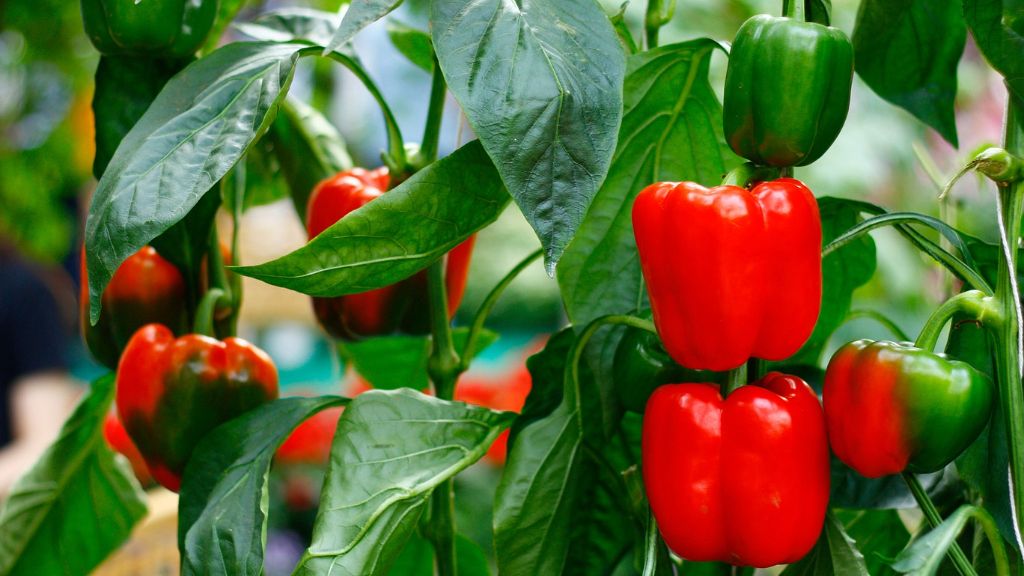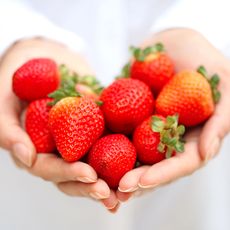Top 10 Questions About Pepper Plants


It can be disheartening to have your hard work in the garden go caput due to unforeseen challenges. That's why it is the goal of Gardening Know How to help avoid these issues, or at the very least amend them, by providing the best information possible so your garden will flourish - and that includes answering the gardening questions that plaque us all. In the garden, pepper growing is a common practice, and not without its own set of problems. Here are the top questions about peppers.
1) How to treat insects on pepper plants? Insect control depends on the type of bug that's attacking your pepper plants. Sap-sucking insects such as aphids, scale, mites or mealybugs are easy to control with insecticidal soap or neem oil spray. (Never spray when temperatures are above 85 F./29 C.). Harmful pests like caterpillars, leafrollers, hornworms and potato beetles can be removed by hand, or you can apply a naturally occurring bacteria known as Bt (Bacillus thuringiensis). Pepper plants are more pest resistant when they aren't stressed; plant peppers in well-drained soil, then ensure they are watered and fertilized properly.
2) How to fertilize pepper plants? Pepper plants need to be fed because nutrients in the soil run out quickly. However, easy goes it, because too much fertilizer can result in big, beautiful, bushy plants with very little fruit. Here's an easy way to ensure your pepper plants have the nutrients they need: Mix a slow-release fertilizer into the soil at planting time (organic, slow-release fertilizer is great for peppers and other edibles), and then follow up with a light application of a water-soluble plant food or fish emulsion every couple of weeks. Be sure to water after applying fertilizer.
3) What causes blossom drop on pepper plants? Blossom drop on pepper plants is usually the result of some type of stress. Some problems are easily rectified, but often, there isn't a lot you can do. For example, drastic temperature changes can cause blossom drop, but the plant often rebounds when the temperature stabilizes. Other possible reasons for blossom drop include poor pollination, over- or under-watering, too much (or too little) fertilizer, excessively low or high humidity, fungal diseases or insect pests.
4) Why are my pepper plants dropping leaves? There are a variety of possible culprits when a pepper plant drops its leaves, including sudden temperature fluctuations. Too much (or too little) moisture can also cause leaf drop. Remember that a little wilt is normal during hot weather, so check the soil for dryness before you water. Look for aphids and other tiny pests and watch for fungal diseases, which often occur when plants are overcrowded and air circulation is impeded. Leaf drop may also be the result of a magnesium deficiency, which is remedied by spraying the plant with a solution of 1 teaspoon Epsom salts to 1 quart water.
5) Why are stems of pepper plants turning black? Bell peppers often have a purple-black coloration at points where stems meet, so this would be normal. But if the black color is a solid black and the area is shriveled or mushy, this would indicate an issue. Various fungal diseases are usually responsible for pepper plant stems turning black, and the most common are phytophthora blight and sclerotinia (southern blight). Fungal diseases are typically moisture-related. Plant peppers in well-drained soil, then apply mulch to keep water from splashing on the foliage. Water carefully at the base of the plant to keep the leaves dry. Take care not to water excessively. Removed diseased pepper plants and destroy them carefully, along with any nearby peppers that may be exposed. Keep the area free of debris. Practice crop rotation for all members of the Solanaceae family (potatoes, peppers, tomatoes, eggplant, etc.). As long as your plant is healthy and thriving, however, it should be fine.
6) Why are pepper plant leaves turning brown? There can be several reasons for pepper plant leaves turning brown or black, including moisture-related fungal disease such as southern blight, phytophthora blight, or others. However, the most common culprit is simply improper watering - either too much or too little. Peppers actually thrive in semi-dry conditions. It's best not to water until the leaves look slightly droopy and the top 3 to 4 inches of soil feels dry to the touch. As a rule of thumb, 1 to 1 ½ inch of water per week is generally sufficient, although pepper plants grown in containers may need more frequent irrigation.
Gardening tips, videos, info and more delivered right to your inbox!
Sign up for the Gardening Know How newsletter today and receive a free copy of our e-book "How to Grow Delicious Tomatoes".
7) How do you stop peppers from falling off? It isn't easy to figure out why peppers are dropping from the plant, and some problems are difficult to control. For example, excessive heat (above 95 F./35 C. or below 55 F./13 C.), or warm nights (above 75 F./24 C.) may be to blame. There's little you can do about the whims of Mother Nature, but a spray of 1 tsp. Epsom salts to 1 quart water may help fruit to set. Look for signs that stems are severed by insects, and if so, apply a pyrethrum-based insecticide. You may also simply have a pollination issue. Pepper blossoms are even more sensitive to temperature fluctuations during pollination. If lack of pollination is a problem, plant flowers nearby to encourage visits from pollinators.
8) What causes leaf curl on pepper plants? Leaf curl on pepper plants may be caused by aphids, thrips or other pests, which can be controlled with insecticidal soap spray or neem oil. Viral diseases can also cause leaf curl, and in this case, plants should be removed as no treatment exists. Environmental stresses are difficult to manage, but leaf curl is sometimes caused by excessive heat or hot, dry winds. Over- or under-watering may also be the culprit. Water only when the top 3 to 4 inches of soil is dry, as peppers prefer somewhat dry soil.
9) Why are peppers not ripening/changing color? This is a common questions, especially when it comes to growing red peppers (or other colored varieties). Patience may be the answer, as peppers require warm (but not excessively hot) days and nights in order to ripen. Keep in mind that all peppers start out green and changing color may take several weeks, even after the peppers have reached full size. Ripening will also slow when fall approaches and temperatures begin to drop. If you want to speed up the process, pick the pepper and put it in a paper bag with a red apple. Color often develops in a couple of days.
10) What are the rotten spots on peppers? Rotten spots on peppers are frequently caused by blossom end rot, especially if the rotten area is near the bottom of the peppers. Blossom end rot is typically the result of a lack of calcium, which may be caused by a number of factors, including over-fertilizing (especially nitrogen), over-watering, lack of calcium in the soil, or by periods of dry weather followed by heavy moisture. Blossom end rot may be due to the plant's inability to take up calcium, typically the result of a problem with soil pH. Peppers thrive in a soil pH of 6.0 and 6.8. We all have questions now and then, whether long-time gardeners or those just starting out. So if you have a gardening question, get a gardening answer. We're always here to help.

A Credentialed Garden Writer, Mary H. Dyer was with Gardening Know How in the very beginning, publishing articles as early as 2007.
-
 How To Grow Strawberries From A Strawberry: All You Need To Cultivate Yummy Fruits
How To Grow Strawberries From A Strawberry: All You Need To Cultivate Yummy FruitsYou may know how to grow strawberries from small plants or runners – but what about growing from the fruit? Here we show you how to grow strawberries from a strawberry
By Mary Ellen Ellis
-
 Best Tomatoes For Containers: 10 Tastiest Varieties For Plentiful Produce In Compact Areas
Best Tomatoes For Containers: 10 Tastiest Varieties For Plentiful Produce In Compact AreasThese are the best tomatoes for containers that prove you don't need to have a large space or elaborate garden to grow delicious produce.
By Bonnie L. Grant